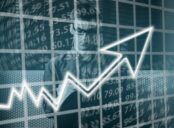Day trading, also known as intraday trading, is a popular trading strategy where traders buy and sell financial instruments, such as stocks, currencies, or commodities, within a single trading day

This article will provide a comprehensive overview of day trading, including its definition, different types, popularity, quantitative measurements, variations among traders, and a historical analysis of its pros and cons.
I. Introduction to Day Trading
Day trading involves taking advantage of short-term price fluctuations to make profits. Traders aim to capitalize on market volatility, buying low and selling high within the same day. Unlike long-term investors who hold assets for an extended period, day traders focus on immediate gains and execute multiple trades in a single session.
II. Comprehensive Presentation of Day Trading

There are various types of day traders, each with unique characteristics and preferences. Some common types include:
1. Scalpers: Scalpers aim to make fast and frequent trades, profiting from small price movements. They focus on liquid markets and use high leverage to amplify their potential gains.
2. Momentum Traders: Momentum traders seek to identify stocks or assets with significant price movements. They ride on the momentum generated by market news, earnings reports, or other catalysts.
3. Breakout Traders: Breakout traders look for assets that are poised to break through key support or resistance levels. They anticipate a strong price movement following the breakout and aim to profit from it.
4. Technical Analysis Traders: These traders use technical indicators and chart patterns to analyze price movements and make trading decisions. They rely on tools like moving averages, MACD, and RSI to identify trends and potential entry or exit points.
Day trading has gained popularity due to its accessibility, as it doesn’t require a large initial investment compared to other trading strategies. Online trading platforms and brokerage firms have made it easier for individuals to participate and execute trades from the comfort of their homes.
III. Quantitative Measurements of Day Trading
Quantitative measurements play a crucial role in day trading, providing traders with data-driven insights. Some commonly used metrics include:
1. Average Profit/Loss per Trade: This metric calculates the average profit or loss a trader makes per trade, providing an overall performance evaluation.
2. Win/Loss Ratio: The win/loss ratio compares the number of winning trades to losing trades. It helps assess the trader’s accuracy and consistency.
3. Risk-Reward Ratio: The risk-reward ratio measures the potential profit gained relative to the potential loss incurred. Traders aim for a favorable ratio to ensure their profits outweigh their losses.
Quantitative measurements enable day traders to evaluate their strategies, adjust their approach, and manage risk effectively.
IV. Differentiating Among Day Traders
While day traders share the goal of profiting from short-term price fluctuations, their approaches and trading styles can differ significantly. Some factors that differentiate day traders include:
1. Trading Style: Traders may adopt different techniques, such as scalping, swing trading, or pattern trading, aligning with their preferences and skills.
2. Time Horizon: Day traders can have varying time horizons, ranging from rapid scalpers who hold positions for a few seconds to swing traders who hold positions for several days.
3. Risk Appetite: Some day traders are more risk-averse and prioritize capital preservation, while others are more aggressive and willing to take larger risks for potential higher returns.
V. Historical Analysis of Pros and Cons
Over the years, day trading has presented both advantages and disadvantages. Understanding its historical pros and cons is essential for individuals considering engaging in this strategy. Some advantages include:
1. High Potential for Profits: Day trading offers the opportunity to generate substantial profits in a short period, particularly when leveraging volatile markets.
2. Flexibility: Day traders have the flexibility to choose their trading hours and may enjoy a better work-life balance compared to traditional employment.
However, day trading also has its drawbacks:
1. High Risk: The fast-paced nature of day trading exposes traders to higher risks, as market conditions can change rapidly, potentially leading to significant losses.
2. Emotional Stress: Day trading requires discipline and emotional control, as traders may experience continuous ups and downs, leading to stress and anxiety.
In conclusion, day trading is a popular trading strategy that involves buying and selling financial instruments within a single trading day. It offers potential profits, albeit with higher risks, and requires disciplined decision-making and risk management. Understanding different types of day traders, quantitative measurements, variations among traders, and historical pros and cons can help individuals make informed decisions when considering day trading as an investment strategy.
Reference:
– SEC.gov – Day Trading: Your Dollars at Risk: https://www.sec.gov/reportspubs/investor-publications/investorpubsdaytipshtm.html





















